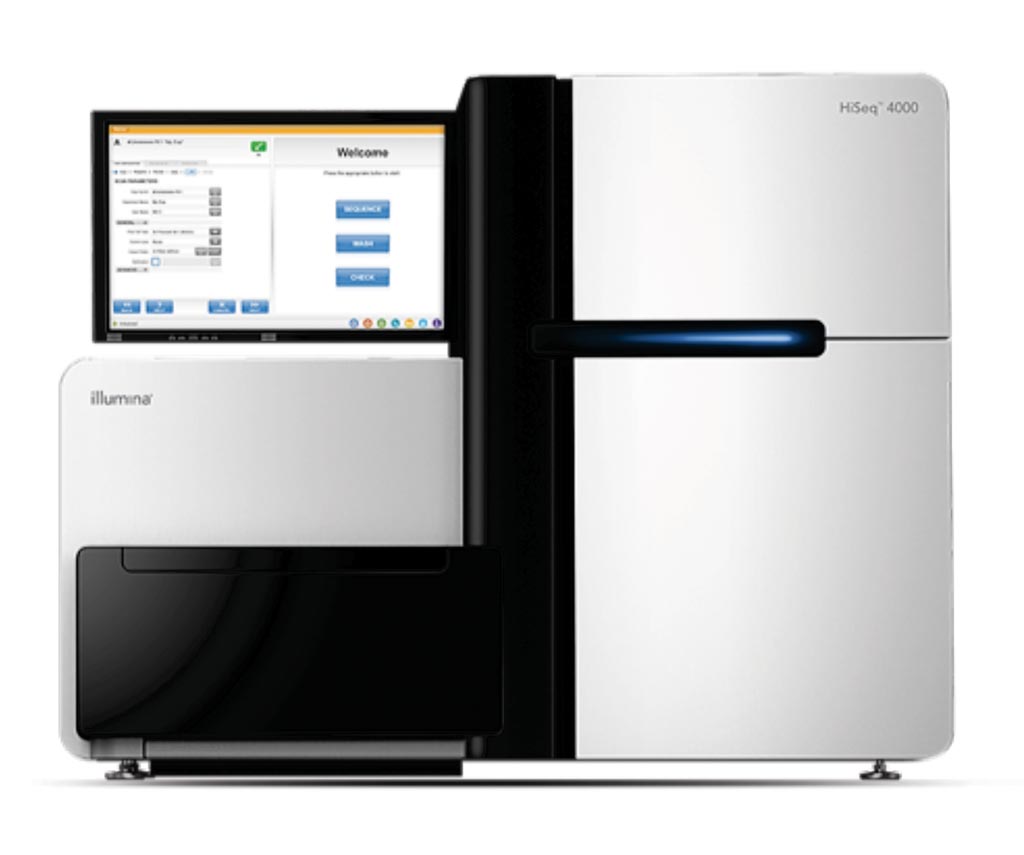Metagenomic Sequencing Proposed for Respiratory Tract Infection Detection
By LabMedica International staff writers
Posted on 13 Dec 2018
Lower respiratory tract infections (LRTIs) are the leading cause of infectious disease-related deaths worldwide yet remains challenging to diagnose because of limitations in existing microbiologic tests.Posted on 13 Dec 2018
In critically ill patients, noninfectious respiratory syndromes that resemble LRTIs further complicate diagnosis and confound targeted treatment. A sequencing-based strategy has been developed for simultaneously assessing pathogen, microbiome, and host response features to potentially diagnose individuals with lower respiratory tract infections.

Image: The HiSeq 4000 Systems leverage innovative patterned flow cell technology to provide rapid, high-performance sequencing. Perform production-scale, high-throughput exome or transcriptome sequencing projects quickly and economically (Photo courtesy of Illumina).
A multidisciplinary team of scientists at the University of California, San Francisco (CA, USA) performed a prospective observational study that evaluated 92 adults with acute respiratory failure requiring mechanical ventilation who were admitted to the University of California, San Francisco (UCSF) Moffitt–Long Hospital ICUs. Subjects were enrolled sequentially between July 25, 2013, and October 17, 2017, within the first 72 hours of intubation for respiratory failure.
During the period of study enrollment, subjects received standard of care microbiologic testing ordered by the treating clinicians. Respiratory testing from bronchial alveolar lavage (BAL), or mini-BAL included: bacterial and fungal stains and semi-quantitative cultures for AFB stains and cultures (n = 8); 12-target clinical multiplex polymerase chain reaction for influenza A/B, respiratory syncytial virus (RSV), human metapneumovirus (HMPV), human rhinovirus (HRV), adenovirus (ADV), and 23 parainfluenza viruses (PIV) 1–4. Other microbiologic testing included 89 blood culture; 87 urine culture; four serum cryptococcal antigen; one serum galactomannan; and serum β-d-glucan. RNA-seq and DNA-seq libraries underwent 125-nt paired-end Illumina sequencing on a HiSeq 4000.
The scientists used rules-based and logistic regression computational models aimed at assaying for lung pathogens based on the DNA and RNA features gleaned from the metagenomic data. They initially tested the algorithms on 20 patients with or without acute lower respiratory tract infections, who had relatively clear diagnoses from the outset. They subsequently validated the models using data for another two dozen individuals, where they could detect lower respiratory tract infections with nearly 96% accuracy before taking the approach forward to a larger group of patients.
The authors concluded that they had addressed the need for better lower respiratory tract infection diagnostics by developing a metagenomic next-generation sequencing-based method that integrates host response and unbiased microbe detection. They then evaluated the performance of this approach in a prospective cohort of critically ill patients with acute respiratory failure. From these data, they suggested that it is possible to bring together pathogen, microbiome diversity, and host gene expression metrics to identify LRTI-positive patients and differentiate them from critically ill controls with non-infectious acute respiratory illnesses. The study was published on November 27, 2018, in the journal Proceedings of the National Academy of Sciences.
Related Links:
University of California, San Francisco













